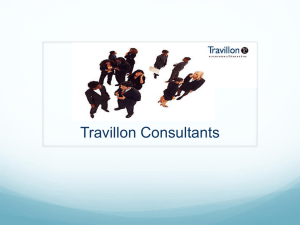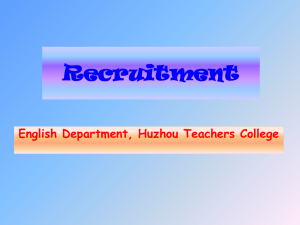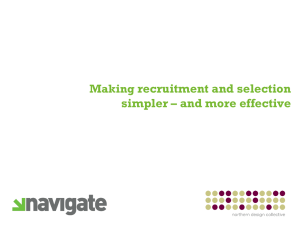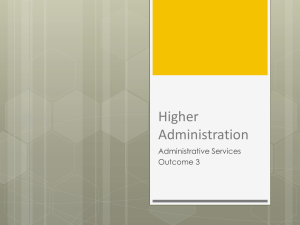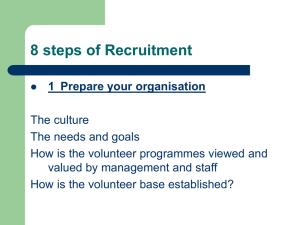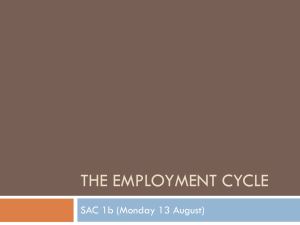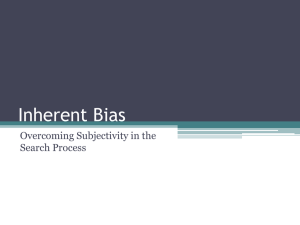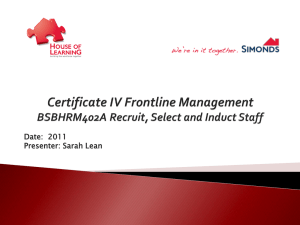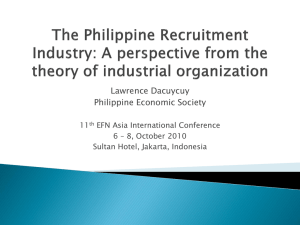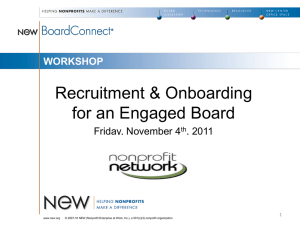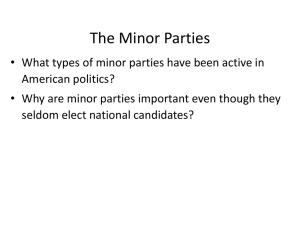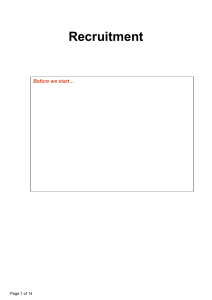recruitment - Bannerman High School
advertisement
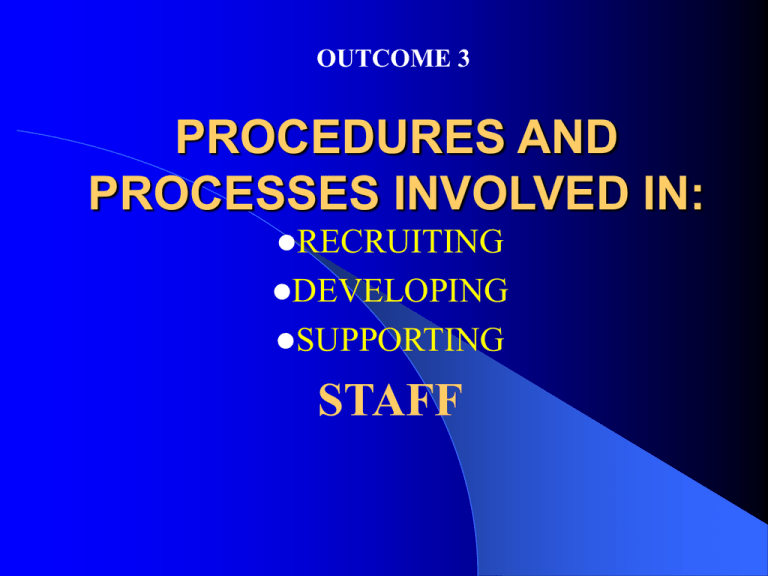
OUTCOME 3 PROCEDURES AND PROCESSES INVOLVED IN: RECRUITING DEVELOPING SUPPORTING STAFF RECRUITMENT AND SELECTION All organisations experience turnover – expected (retirements) or unexpected (resignations) – which creates a vacancy. If a vacancy needs to be filled the Human Resources department of an organisation will follow recruitment and selection procedures Recruitment = the process of attracting people to apply for a job (job applicants) Selection = the process of sorting and selecting a suitable employee from the applicants The Recruitment Process Carry out a Job Analysis Prepare a Job Description/Person Specification Advertise the vacancy The Selection Process Deal with application forms/CVs/letters Interview/test candidates Select successful candidate RECRUITMENT Job Analysis Each time a vacancy needs to be filled the business must analyse whether the job has changed and what it involves. This includes: • Tasks to be completed • Knowledge and skills needed • Inter-personal skills required From this information a Job Description and Person Specification can be prepared RECRUITMENT Job Description This is a description of what the job involves. It includes: Job Title Responsible to/for Location/Department Internal and external relationships Purpose of the Job Main Duties Position Working Conditions (hours, holidays) By law new post holders must be given a written copy of the job description within first 8 weeks of employment RECRUITMENT Person Specification This describes the type of person who will meet the requirements of the Job Description. This includes: • • • • Physical characteristics Achievements of the individual Knowledge and skills of the individual Personal attributes These requirements will either be essential or desirable How do we inform potential applicants of the vacancy? RECRUITMENT Advertising the Vacancy Internal advertising - less costly than external advertising and can motivate existing employees External advertising - costly but brings in “new blood” Direct recruitment – “head-hunting” – the organisation will directly invite someone to apply for the job Recruitment agency – costly but saves time and provides expertise RECRUITMENT The success of the recruitment process in attracting the right kind of applicant and in sufficient numbers will depend on: • providing accurate and essential information • targeting the right groups of people Selection can now begin – it is important the the right person is found for the job SELECTION The Selection Process At the end of the recruitment process, applicants will have forwarded their details in the format they were asked to apply in The two main forms are: • Application forms • Curriculum Vitae (CV) SELECTION Application Forms This is a printed form that applicants complete to apply for a job All forms contain sections for: Personal Details Education Qualifications Employment history Hobbies/Interests References Advantages/Disadvantages of Application Forms Advantages • Easy to use and match against job criteria • Can be designed to ensure all relevant information is asked for • Selectors see candidate’s powers of written expression Disadvantages • Doesn’t give a real feel for the person • Not always accurate, candidate can lie, leave things out • Could be completed by someone else Curriculum Vitae (CV) A CV can be used instead of an application form This is a summary of all your achievements and qualifications It also contains sections on: Personal Details Education Qualifications Employment history Hobbies/Interests References Advantages/Disadvantages of Curriculum Vitae Advantages • Can provide a good personal overview of the applicant • Selectors can assess candidate’s writing skills Disadvantages • Not always accurate candidate can lie, leave things out • Could be completed or tidied up by someone else Selection Tests There are a number of different tests which can be used to assess a candidates suitability Great care must be taken to ensure they are appropriate, valid and reliable in their results Types of Selection Tests Practical Tests – check actual competency in skills needed for the job Medical Tests – check to see if healthy, fit or strong enough for job Aptitude Tests – tests the ability to learn or adapt if there are new skills to be developed in the job Personality Tests – looks at behaviour or attitudes and indicate whether a person is suitable for the job Advantages/Disadvantages of Selection Tests Advantages • Can check the validity of candidate’s skills • Can give comparison of skill level between candidates • Gives an all-round picture of candidates Disadvantages • Candidate’s may perform poorly due to nerves • If not well designed, can discriminate against some candidates • Personality tests may be unreliable if not administered by trained personnel Psychometric Tests These take the form of questionnaires and are aimed at assessing aptitudes and personality. These tests are accredited by the British Psychological Society and must be administered by trained personnel They have an extremely high rate of validity and reliability as selection methods. Interviews The most common form of selection The candidates are asked a series of questions There responses are examined to see who is the most suitable candidate They can be very unreliable if not carried out properly Advantages/Disadvantages of Interviews Advantages • Opportunity of meeting candidates face to face • Opportunity to probe further points of interest on application form • Opportunity to ask “what if?” scenarios • Opportunity for the applicant to ask questions Disadvantages • Can be subjective – decisions can be based on first impression • Can be subjective -interviewers may be biased eg family or friend of candidate • Other factors can impair performance of candidate eg poor questions, poor interviewer • May not give equal chance to candidates if not all asked the same questions Methods of Ensuring Interviews are Reliable Use trained interviewers and prepare well Have more than 1 person interviewing Structure the interview Design questions appropriately Use person specification and a scoring system to measure candidates against each other – ensure same criteria is used (criterion-based interviewing) References are usually used as a back-up selection method. Jobs can be offered “subject to references” Most organisations will use a combination of selection techniques eg application forms + interviews The use of assessment centres is growing – short listed candidates are gathered for one or more days and undergo a number of selection processes – interviews, tests, role-plays. These can be costly and are mainly used for senior management posts however they have proved very reliable. Internal Recruitment This means that the job vacancy is filled by someone who already works for the company.
